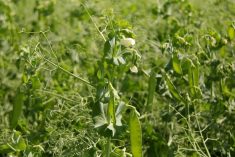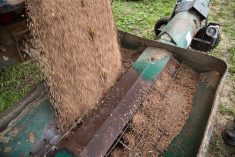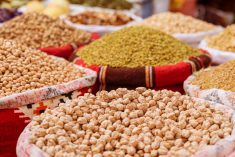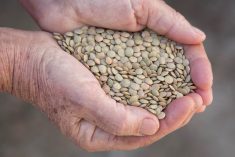CNS Canada — Fababean acres are on the rise in Western Canada, as the crop is seen as a good pulse alternative for producers seeking other options in their rotations.
Better disease resistance and ease of harvest have been two selling points for the crop.
“We’ve had significant uptake on fababeans,” said Leanne Fischbuch, executive director of the Alberta Pulse Growers, noting acreage has climbed considerably from next to nothing over the past few years.
After about 15,000 acres went to the crop as recently as 2012, by 2014, crop insurance estimates would put Alberta’s fababean area at about 71,000 acres, “but when you talk to growers there was probably more like 100,000 acres out there,” said Fischbuch.
Read Also

India slaps 30 per cent import duty on yellow peas
India has imposed a 30 per cent duty on yellow pea imports with a bill of lading date on or after Nov. 1, 2025.
She estimated planted area would be steady to higher in 2015.
“We are seeing a lot more interest in fababeans this year,” said Carl Potts, executive director of Saskatchewan Pulse Growers.
A number of wet years, and the resulting challenges with root disease in pea crops in some areas, were contributing to the interest in fababeans, which are more disease-resistant, he said.
Fababeans are the best fixers of nitrogen available in Saskatchewan, said Potts, adding that the crop was also better adapted to cooler and wetter areas.
Statistics are spotty, but Potts estimated Saskatchewan acres could be in the range of about 10,000 to 15,000 acres or higher in 2015.
“It’s an alternative for people who want to keep a pulse in the rotation,” said Fischbuch.
On top of their disease resistance, she noted, fababeans are also easier to harvest compared to other pulses as they stay up better. Prices and yields are also favourable.
Egypt is the world’s largest importer of fababeans, but there other export markets as well, and Fischbuch said there is also demand from domestic processors.
The livestock sector provides a good market for feed-quality fababeans, with many acres being grown for on-farm use, she said.
— Phil Franz-Warkentin writes for Commodity News Service Canada, a Winnipeg company specializing in grain and commodity market reporting.













